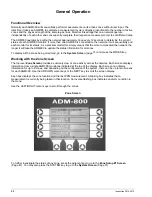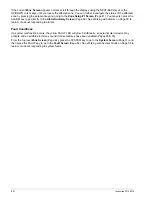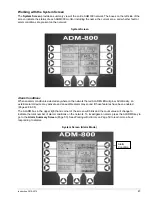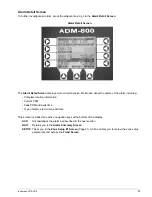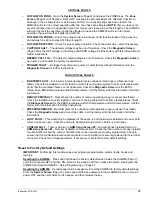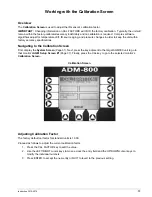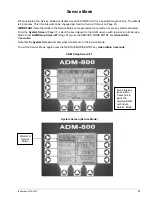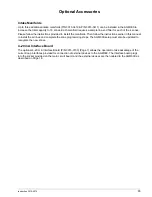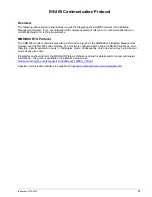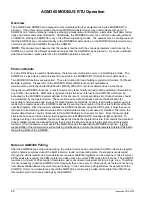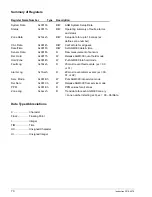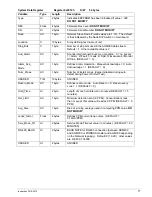
58
Instruction 3015-4275
Calibration Procedure
The CAL FACTOR is determined by sampling a known dilution of ammonia gas. The sample must be prepared
to less than half the desired accuracy, and the concentration must be corrected for ambient temperature and
pressure at the time of measurement.
Calibration is best performed at or near full scale (10,000 PPM). It can, however, be done at any concentration,
and ideally in the range where maximum accuracy is desired down to, but not below, 100 PPM.
A cylinder of ammonia gas at a certified PPM level must be used to assure sampling occurs at ambient
conditions. A minimum sample size of 5 liters is required.
The AGM should be operating for at least one hour prior to performing a calibration.
Prepare the AGM300 for sampling by initially setting its CAL FACTOR to 1.000 (Page 57). Next, set up the
AGM300 for a logging interval of zero minutes (Page 42), and place the AGM300 in its zone hold mode for the
zone you wish to set up (Page 45).
Connect the sample bag directly to the intake port for the zone you have set up and allow the AGM300 to
sample the entire bag. When sampling is complete view the trend data for the zone used to sample (Page 53).
Read the measured PPM by placing the cursor on the spikes cause by the sample. If the bag was large enough
for multiple samples, average the most stable ones.
The new CAL factor is computed by dividing the known gas value by the measured value. Typically this value
will be between 0.95 and 1.05. Enter the computed CAL factor into the monitor using the ADM800 (Page 57) or
PC interface. This value is stored in non-volatile memory.
Summary of Contents for ADM800
Page 17: ...Instruction 3015 4275 9 AGM300 AC Input Power and Ground Connections...
Page 33: ...Instruction 3015 4275 25 ADM800 AC Input Power and Ground Connections...
Page 70: ...62 Instruction 3015 4275 Notes...
Page 71: ...Instruction 3015 4275 63 Appendix...
Page 74: ...66 Instruction 3015 4275 ADM800 Logic Diagram...
Page 93: ...Instruction 3015 4256 85 Notes...

